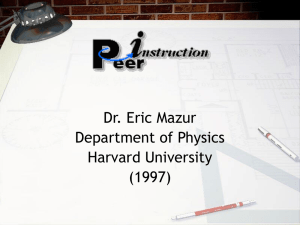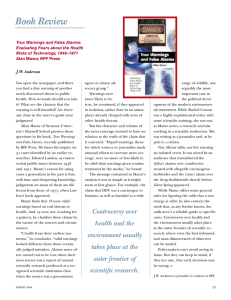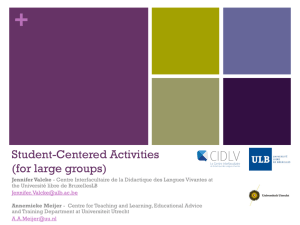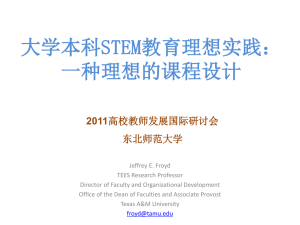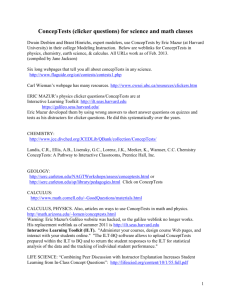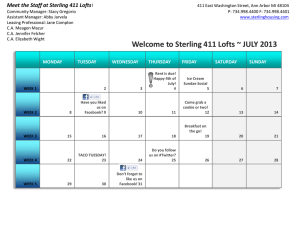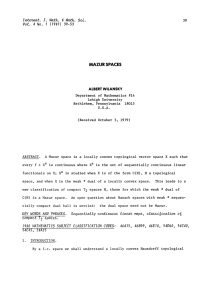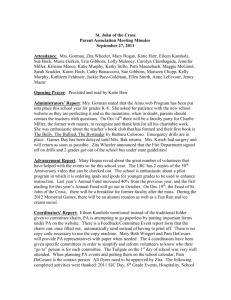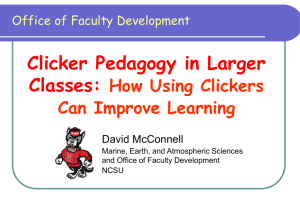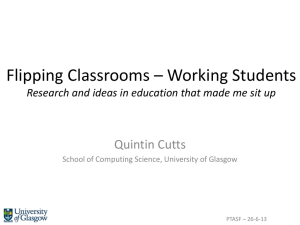Lose the Lectures
advertisement
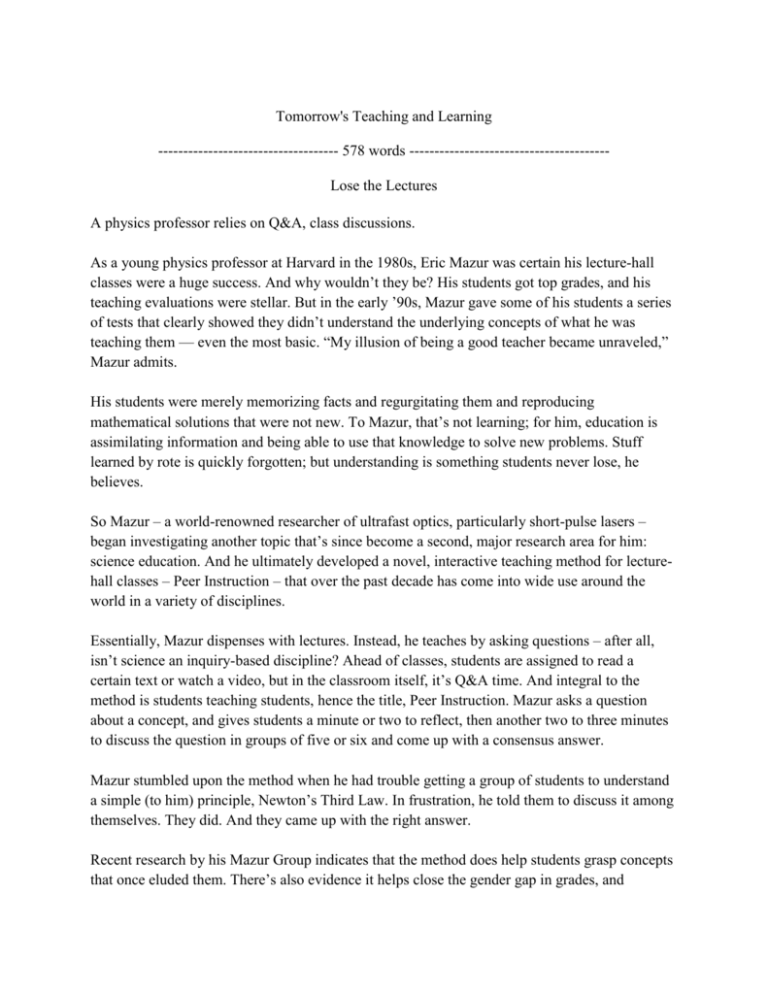
Tomorrow's Teaching and Learning ------------------------------------ 578 words ---------------------------------------Lose the Lectures A physics professor relies on Q&A, class discussions. As a young physics professor at Harvard in the 1980s, Eric Mazur was certain his lecture-hall classes were a huge success. And why wouldn’t they be? His students got top grades, and his teaching evaluations were stellar. But in the early ’90s, Mazur gave some of his students a series of tests that clearly showed they didn’t understand the underlying concepts of what he was teaching them — even the most basic. “My illusion of being a good teacher became unraveled,” Mazur admits. His students were merely memorizing facts and regurgitating them and reproducing mathematical solutions that were not new. To Mazur, that’s not learning; for him, education is assimilating information and being able to use that knowledge to solve new problems. Stuff learned by rote is quickly forgotten; but understanding is something students never lose, he believes. So Mazur – a world-renowned researcher of ultrafast optics, particularly short-pulse lasers – began investigating another topic that’s since become a second, major research area for him: science education. And he ultimately developed a novel, interactive teaching method for lecturehall classes – Peer Instruction – that over the past decade has come into wide use around the world in a variety of disciplines. Essentially, Mazur dispenses with lectures. Instead, he teaches by asking questions – after all, isn’t science an inquiry-based discipline? Ahead of classes, students are assigned to read a certain text or watch a video, but in the classroom itself, it’s Q&A time. And integral to the method is students teaching students, hence the title, Peer Instruction. Mazur asks a question about a concept, and gives students a minute or two to reflect, then another two to three minutes to discuss the question in groups of five or six and come up with a consensus answer. Mazur stumbled upon the method when he had trouble getting a group of students to understand a simple (to him) principle, Newton’s Third Law. In frustration, he told them to discuss it among themselves. They did. And they came up with the right answer. Recent research by his Mazur Group indicates that the method does help students grasp concepts that once eluded them. There’s also evidence it helps close the gender gap in grades, and improves the retention of freshman and junior students in science majors. It works, Mazur says, because those students who have deduced the correct answer have only just mastered that knowledge, so are more attuned to why their peers are still in the dark and hence can more intuitively guide them to enlightenment. The method’s been documented in his book, Peer Instruction: A User’s Manual, and in an award-winning DVD he coproduced, Interactive Teaching. Mazur also pioneered the now popular use of wireless remotes, or “clickers,” in the classroom to help gauge student understanding of material. He stresses, however, that “it’s the pedagogy that matters, not the technology.” His earliest attempts at interactive teaching used flashcards in lieu of clickers. The Netherlands-born Mazur, 56, who is also dean of applied physics, continues to look for better ways to teach science. Lecture demonstrations are perhaps the most enjoyable aspect of physics classes, but passive viewing of demonstrations doesn’t enhance student understanding, studies show. So his group is looking for ways to make demonstrations more effective, while keeping the fun intact. He’s also critical of researchers who find teaching a chore. Mazur finds it “shocking” that academia is so unsystematic in its approach to instruction. “I am a professor. I am supposed to be a teacher.”
